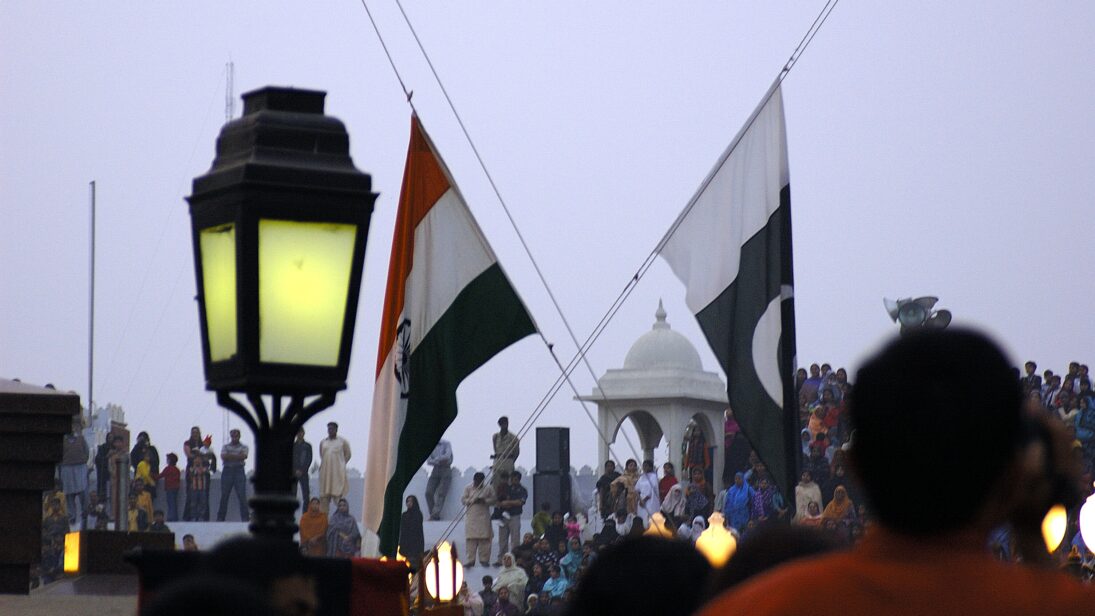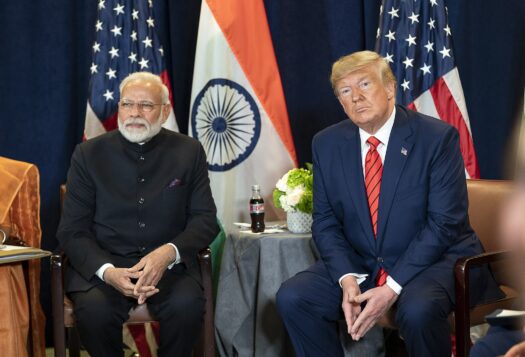
On April 11, Shehbaz Sharif was sworn in as Pakistan’s 23rd Prime Minister after Imran Khan’s ouster through a Vote of No Confidence. Among the first international leader to congratulate Prime Minister Sharif was Indian Prime Minister Narendra Modi. Prime Minister Sharif warmly reciprocated, expressing a desire for “meaningful engagement” and peaceful resolution of the Kashmir dispute. The two leaders have also reportedly exchanged letters through diplomatic channels.
Although, this is an established diplomatic practice, it comes after a particularly turbulent phase in bilateral relations which have been in a downward spiral since August 5, 2019 when New Delhi revoked the special status granted to the disputed region of Kashmir under Article 370 and 35A of India’s constitution. However, the continuation of the joint ceasefire announcement on February 25, 2021 and the explicit mention of improving ties with India, albeit keeping Kashmir at the core of the bilateral relationship, in Pakistan’s first ever National Security Policy opens the possibility of restoring diplomatic relations. While it remains to be seen whether both governments possess the political will to reset the downturn in relations, the change of government in Pakistan provides an ideal environment to capitalize on the positive momentum to rejuvenate ties, notwithstanding the challenges on both sides.
A View From Pakistan: The PML-N’s Approach
Shehbaz Sharif’s possible India policy should not be looked in isolation but in the context of the three tenures of his eldest brother and member of the same political party, Nawaz Sharif. Numerous accounts have pointed towards Nawaz Sharif’s “soft approach” towards India, including meeting with former Indian Prime Minister Atal Bihari Vajpayee for peace talks in 1999 as well as sharing a good relationship with Modi. Marking what was considered to be a departure from Pakistan’s stance on Kashmir, Nawaz Sharif did not meet the Hurriyat leadership in 2014 during his last term in office. More so, the joint statement released after an important Ufa declaration signed by the then Prime Minister Nawaz Sharif and Modi in 2015 did not make a mention of Kashmir—resulting in backlash back home for Sharif.
…It is important to note that relations with India are not purely defined by the civilian leadership of the country but also by the military leadership. Perhaps, the tone towards India may be softer in comparison to the Imran Khan government, however, a major shift in policy is highly unlikely…
Shehbaz Sharif too has been often touted as less hawkish towards India unlike his predecessor. As businessman himself, he has favored trade ties between the two countries. In 2013, Prime Minister Shehbaz paid a visit to India and met the then Prime Minister of India Manmohan Singh and had a meeting with State Minister Prakash Singh Badal. In the meeting he called for peaceful dialogue between the two counties.
Whether or not Shehbaz Sharif’s approach towards India will be an extension of his brother’s policy is a question for the future. However, it is important to note that relations with India are not purely defined by the civilian leadership of the country but also by the military leadership. Perhaps, the tone towards India may be softer in comparison to the Imran Khan government, however, a major shift in policy is highly unlikely for two reasons. The first reason is Pakistan’s current domestic turmoil. There has been substantial polarization in the Pakistani public after the no-confidence vote including protests against the current government and any move made towards India in efforts to reconcile could lead to major backlash from the public. Second, in recent years, competition between the United States and China has intensified, which has the potential to inform India-Pakistan ties. Pakistan and China ties are marked by a history of cordial relations and strong strategic partnership, while India and the United States bilateral ties have grown tremendously in recent years. This is especially the case after the signing of the Basic Exchange and Cooperation Agreement during the 2020 2+2 dialogue and establishing a partnership in the Quadrilateral Security Dialogue.

At various instances the United States and China have each called for India and Pakistan to work bilaterally and seem to have shared interests in preventing crises in South Asia. However, the U.S partnership with India as a counter-weight to China undermines the potential role of the United States and China as mediators in Pakistan-India relations. For now, the prospects of the two neighbors working bilaterally without third party mediation also seem unlikely given the growing power asymmetry between Pakistan and India and failed attempts at dialogue in the recent past. However, if the leadership on both sides can look beyond their strategic relations with extra-regional powers, they can perhaps, resolve their bilateral matters in interest of South Asia’s regional stability.
A View from India: Is Another “Leap of Trust” Possible?
In contrast to India’s fairly stable political framework and consistent political parties, Pakistan’s turbulent political history, frequent leadership changes, and the active involvement of the military in determining the country’s foreign relations, has often aggravated the frequent fluctuations in bilateral dialogue on sustained peace. The memory of Indian Prime Minister Atal Bihari Vajpayee undertaking a leap of trust and visiting his Pakistani counterpart, then Prime Minister Nawaz Sharif, in Lahore and re-opening the bus route between New Delhi and Lahore in 1999 only for the both countries to be locked in a bloody war in Kargil just a few months later, still remains fresh in India. Since Nawaz Sharif’s ouster in a military coup the same year, no Indian leader has taken any unilateral measure to diffuse the mutual distrust, fear, and suspicion, which have come to dominate bilateral relations.
Since Nawaz Sharif’s ouster in a military coup [in 1999], no Indian leader has taken any unilateral measure to diffuse the mutual distrust, fear, and suspicion, which have come to dominate bilateral relations.
Domestically, the significant uptick in anti-Pakistan rhetoric in India bodes against the future possibility of healthy bilateral relations. Despite this, there is some hope for cautious optimism in India about the possibility of improving relations with Pakistan under Prime Minister Shehbaz Sharif. Optimistic because of the relatively better past performance of the PML-N governments with BJP leadership but cautious because Modi’s BJP is significantly different from Vajpayee’s BJP, which displayed the political will to radically transform relations with Pakistan without the current government’s rhetoric or actions.
New Delhi will closely observe how U.S.-Pakistan relations develop, as Sharif’s government has declared its intention to engage “constructively and positively” with Washington. As U.S.-China competition intensifies, Pakistan is more likely to side with its all-weather ally China, which welcomed Shehbaz Sharif’s election with the promise to always put Pakistan “as a priority.” Nevertheless, Washington may choose to capitalize this moment to reset relations with Islamabad, as the Ukraine crisis has revealed some tensions in U.S.-India relations, and renewed the urgency to find more partners in Asia. A closer U.S.-Pakistan relationship will undoubtedly cause some unease in New Delhi, which in the past has deterred India from pursuing ties with Washington. India has consistently rejected third party mediation in the Kashmir issue—which it considers an exclusively bilateral issue—and former U.S. President Donald Trump’s offer to be a mediator, was not recieved well in New Delhi. However, India’s apparent comfort with the UAE’s role as a mediator and strong reaction to Congresswoman Ilhan Omar’s visit to disputed Kashmir territory, only goes to show India’s specific discomfort with close ties between Washington and Islamabad, despite its own relations with the former having grown tremendously over the past decade.
Looking Ahead
Perhaps the most promising sign on improving ties is the ongoing ceasefire on the Line of Control— which has sustained since March 2021. The ceasefire came at a crucial time for India, which was worried about a two-front war amidst clashes with China in Galwan. Pakistan has noted that it has never shied away from talks with India despite its vulnerability and losing diplomatic leverage, sharing the similar reason of avoiding two front situation with unstable Afghanistan on its West while actively curbing internal turmoil. However, the unsuccessful record of past ceasefire agreements, remains an unfortunate reminder that there is no simple solution to the protracted, historically rooted security issues which plague bilateral relations.
Herein lies an opportunity for both governments, to not repeat mistakes of the past and delink security issues with trade, which will help the pandemic battered economies of both countries.
Fortunately, there are numerous other areas which hold immense scope for cooperation, one of which is trade. A World Bank study estimated that India-Pakistan trade could be as high as USD $37 billion, despite standing at a mere $2 billion in 2018. Influential voices within Pakistan advocating reopening trade ties with India, together with the government’s recent decision to lift a nearly two-year ban on Indian sugar and cotton imports, paves the way for the new government to bring focus back onto this pressing question. After sustained calls from national level politicians, the Indian government has also indicated its willingness to re-open trade ties with its neighbor, but has placed the onus on Pakistan.
Herein lies an opportunity for both governments, to not repeat mistakes of the past and delink security issues with trade, which will help the pandemic battered economies of both countries. Despite tensions, sustained progress on building the Kartarpur Corridor—a four kilometer long visa free corridor allowing Indian pilgrims to enter Kartarpur Sahib Gurdwara, in Narowal District, Pakistan—throughout 2019 and its re-opening in 2021, after the COVID-19 pandemic, indicates the diversity of India-Pakistan bilateral relations, which cannot and should not, be defined only through the security lens alone. Although a radical change in bilateral relations is unlikely and a tall ask, given the volatile state of the current Pakistani government and the strong force of Hindu nationalism in India, incremental steps, whether through trade or cultural diplomacy, can go a long way.
***
Click here to read this article in Urdu.
Image 1: Giridhar Appaji Nag via Flickr
Image 2: MEA Photography via Flickr


